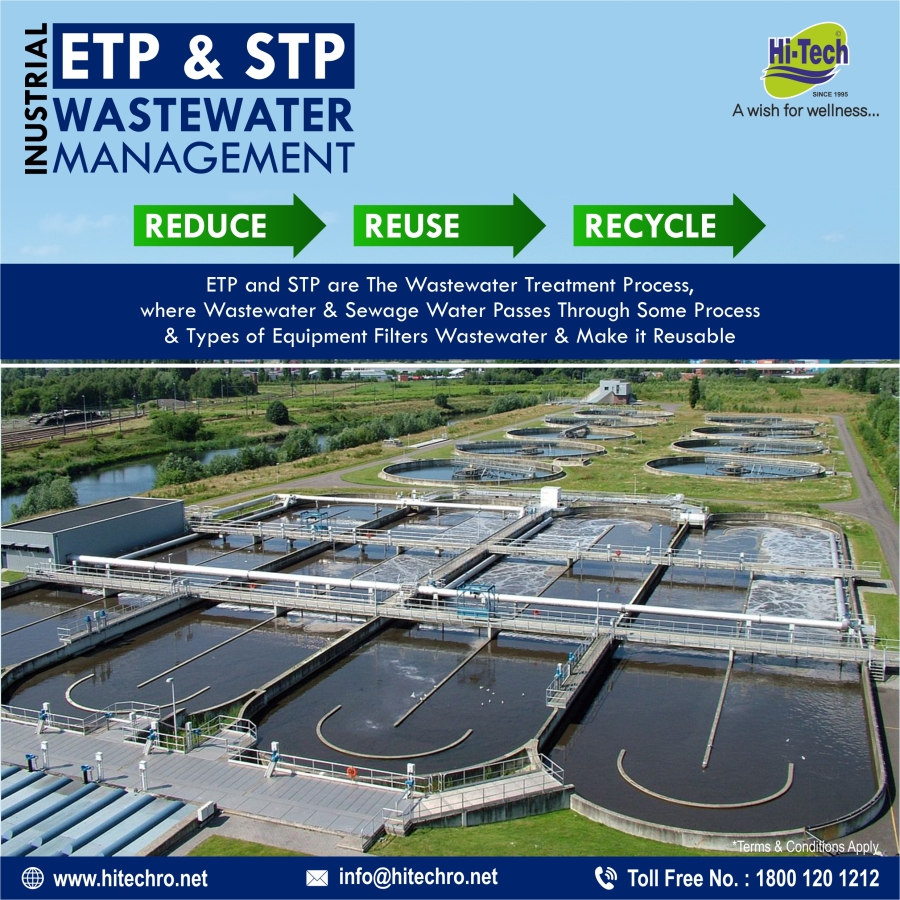Waste Water Treatment ETP and STP processes

Wastewater treatment is an utmost priority step to be taken. It is a process to remove contaminants from wastewater or sewage and convert it into an effluent that can be returned to the water cycle with minimum impact on the environment, or directly reused. Wastewater treatment methods are categorized into three sub-divisions, physical, chemical and biological.
Some of the major important types of wastewater treatment process are as follows:
• Effluent Treatment Plant,
• The sewage treatment plant,
• Common and combined Effluent Treatment Plants
A. Effluent Treatment Plant:
ETP or Effluent Treatment Plant is one of the water treatment processes; it is used by leading companies in the pharmaceutical and chemical industry to purify. Effluent type released in water depends on the industry. Some effluents contain oil and grease and some contain toxic material, effluents from the food and beverage industry contain degradable organic contaminants. For the treatment of different types of effluents, specific treatment technology is required, which is called, ETP.
Benefits of ETP (1):
1. To clean industry effluent and recycle it for further use
2. To reduce the usage of fresh water in industries
3. To preserve the natural environment against pollution
4. To meet the standards for the emission of pollutants set by the Government and avoid heavy penalties.
5. To reduce expenditure on water acquisition
B. Sewage Treatment Plant:
It is the process of removing contaminants from wastewater and household sewage, both affluent and domestic. Wastewater from flushing the toilet, bathing, cleaning sink, and general regular goes down the drain and into a pipe, which joins a large sewer pipe under the road. The larger pipe also joins a major pipe that leads to the treatment canter.
This wastewater treatment follows some below given steps,
1. Preliminary Treatment:
Its objective is a physical separation of large-sized contamination which may block or damage equipment. For example, cloth, paper, plastic, wood, sanitary items, etc.
2. Primary Treatment:
It involves the separation of organic solids matter from the wastewater. It removes floating and settles able material such as suspended solids and organic matter. It involves both physical and chemical treatment.
3. Secondary Treatment:
The water treatment process is followed by aeration lanes. It is treated by pumping air into the tank that encourages bacteria to break down the tiny bits of sludge that escaped the sludge scrapping process.
4. Disinfection Treatment:
This is the final stage of water treatment. It raises the effluent quality to the desired level before it is reused, recycled or discharged to the environment. It is involved membrane filtration process which allows the clean water to pass the other side. Along with these many processes in the last, it followed by UV treatment to leave it disinfected. It ensures water quality and does not produce any disinfection by-products.
Reference: http://neoakruthi.com/blog/effluent-treatment-plant-1.html

